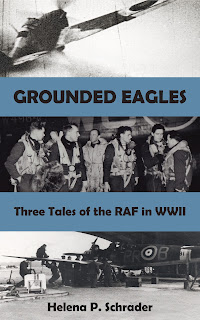Precision Bombing in RAF
It has become a cliche to claim that the RAF conducted "area bombing" at night and the USAF conducted "precision bombing" by daylight. As with most cliches, there is a kernel of truth in it, but it is also a gross oversimplification. It is certainly true that after taking over as C-in-C of Bomber Command, Air Marshal "Bomber" Harris embraced the idea of whole-scale destruction and scorned most efforts to attack specific targets as pointless. However, it is wrong to claim that the RAF as a whole never attempted or achieved precision.
For a start, the RAF began the war with a doctrine of strategic bombing that was not materially different from that of the USAAF. Furthermore the crews -- and the public -- were religiously assured that all targets were "legitimate military targets" and that the objective in all bombing was to obtain the greatest possible accuracy and minimize collateral civilian damage. Indeed, the RAF's failure to achieve the accuracy for which it strove was one of the best kept secrets of the war. To the very end, many bomber crews and many more ordinary civilians sincerely believed that not only was the objective precision bombing, but that the RAF was on the whole doing a good job.
Of course, the reality looked quite different.
The RAF began the war just as the USAAF did believing that "the bomber would always get through." RAF doctrine called for bombers to fly in day time when visibility was good and to sedately bomb targets without significant opposition -- rather as they did when suppressing tribal revolts in a colony somewhere. It was not long before the reality of German fighter and anti-aircraft defenses shattered these illusions. With casualty rates in excess of 50% on too many raids and morale cracking, the RAF was forced to abandon daylight bombing almost entirely.
It is important to remember that it was not ever completely abandoned and over and over again crews were sent to attack targets in daylight whenever someone senior enough decided the target was important enough. For example, on 17 April 1942 the situation in the Atlantic was so dire that the RAF was asked to take out the MAN U-Boat engine plant in Augsburg. Two flights of six aircraft, one from 44 Squadron and one from 97 Squadron, were dispatched in daylight to deliver a low-level attack. Only two of the aircraft from 44 Squadron reached the target and only one returned, that of the flight commander, Squadron Leader Nettleton. He was awarded the VC for continuing with a damaged aircraft and wounded on board -- and for hitting the target. This was not an isolated incident.
Nevertheless, from June 1940 onwards, the bulk of the RAF's bombing was done by night. In the beginning the RAF lacked any means for accurate navigation to the target, had no ability to identify a target at night, and no bombsite technology that facilitated accurate bomb placement. Crews relied almost entirely upon dead reckoning based on unreliable weather forecasts to reach their destinations. They could rarely identify specific targets on a blacked-out continent often covered by cloud. Furthermore, they used bombs rather like barrel drums without any aerodynamic qualities that just tumbled out and fell haphazardly. It is hardly surprising that in the next two to two-and-a-half years, most of the bombs fell comparatively harmlessly across the German countryside.
Yet the shocking truth of the RAF's ineffectiveness horrified Churchill and the UK's leadership and solutions were frantically sought. While the scientists worked on a succession of navigation devices (Oboe, H2S etc.) and tried to develop bombs that could be aimed better (Tall Boy, Grand Slam), the RAF focused its attention on operational changes. The most prominent of these was the creation of the Pathfinder Force with the mandate to mark targets accurately with flares readily (at least in theory) visible to the "Main Force" aircraft that followed. In addition to the Pathfinders, other special operations units such as 617 Squadron experimented with target marking while continuing to perform extremely accurate bombing by both day and night. In the coming weeks I will be providing some examples one at a time.
My novels about the RAF in WWII are intended as tributes to the men in the air and on the ground that made a victory in Europe against fascism possible.
Riding the icy, moonlit sky,
they took the war to Hitler.
Their chances of survival were less than fifty percent.
Their average age was 21.
This is the story of just one bomber pilot, his crew and the woman he loved.
It is intended as a tribute to them all.
or Barnes and Noble.

"Where Eagles Never Flew" was the the winner of a Hemingway Award for 20th Century Wartime Fiction and a Maincrest Media Award for Military Fiction. Find out more at: https://crossseaspress.com/where-eagles-never-flew
For more information about all my aviation books visit: https://www.helenapschrader.com/aviation.html







Comments
Post a Comment